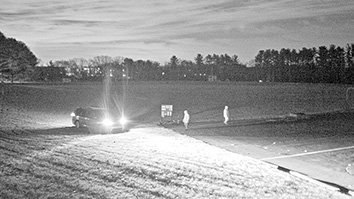Citation
Richards, P. G., Nicolls, M. J., Heinselman, C. J., Sojka, J. J., Holt, J. M., & Meier, R. R. (2009). Measured and modeled ionospheric densities, temperatures, and winds during the international polar year. Journal of Geophysical Research: Space Physics, 114(A12).
Abstract
This paper examines the ability of ionospheric models to reproduce measured electron density, winds, and temperatures during the International Polar Year (IPY) in 2007. The models include the field line interhemispheric plasma (FLIP) model, the international reference ionosphere (IRI) model, and the empirical horizontal neutral wind models (HWM) (HWM93, HWM07). For Poker Flat, Alaska, there is exceptionally good agreement between the FLIP model and measured electron density, winds, and temperatures in equinox and winter. This research shows an interesting post sunset peak in Te from late fall through early spring that is reproduced by the FLIP model. In June and July the FLIP model underestimates the measured peak electron density by a factor of 2. Although both the data and model show evidence of an F1 peak near 150 km in summer, the model F1 peak electron density tends to be larger than the F2 peak electron density and that is not seen in the data. The summer discrepancy is most likely due to incorrect atomic to molecular neutral density ratios. The FLIP model reproduces the Millstone Hill data well throughout 2007. The IRI model agrees well with the electron density data during the day but overestimates the peak electron density and the height of the peak at night. The equivalent winds from the FLIP model and the winds from the HWM93 model agree well with the measured winds. The HWM07 winds are different from the earlier HWM93 winds at Poker Flat and do not agree as well with the data.


